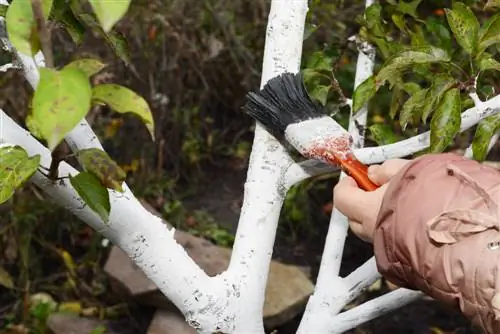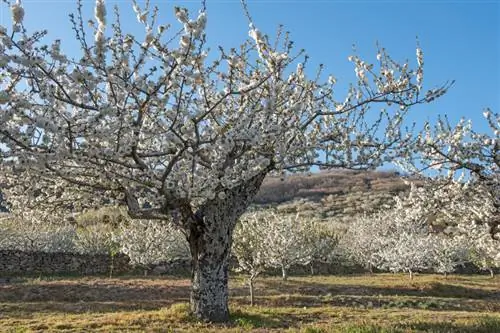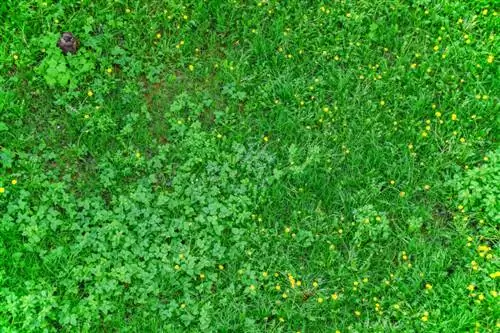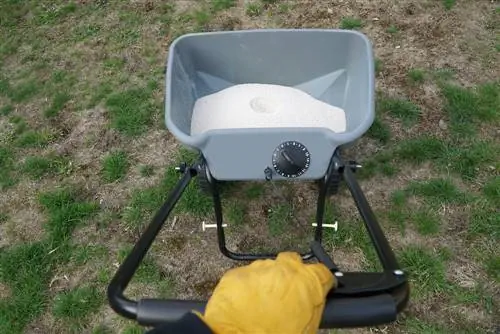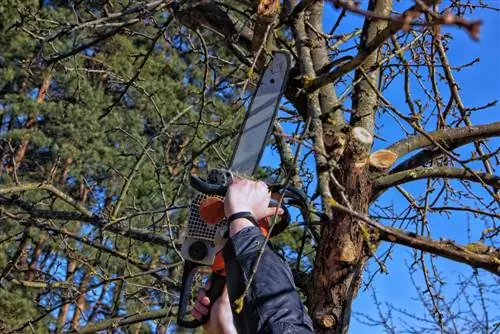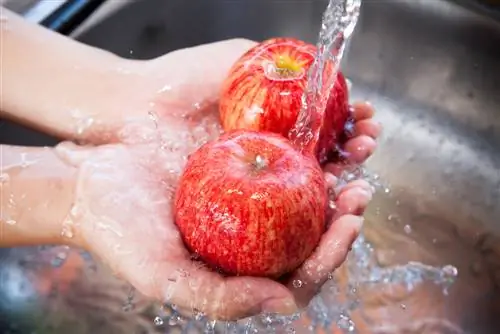- Author admin [email protected].
- Public 2023-12-16 16:46.
- Last modified 2025-01-23 11:21.
For fruit trees from regions with mild winters, such as quinces and peaches, harsh winters and frost in autumn or spring can have serious effects. Sudden cold snaps cause great damage, especially in spring. Not only the fruit tree blossoms are at risk, but also the bark of the trees. These can become cracked and thus provide a gateway for pathogens.
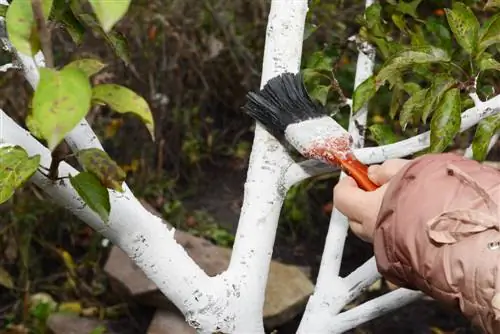
Why is liming fruit trees important?
Fruit trees should be painted with lime to prevent cracking in the bark caused by temperature fluctuations in winter. The lime coating reflects sun rays and thus protects against frost cracks and frost plate formation.
Why and how you should lime fruit tree trunks
From mid-January, but at the latest from February, the tree trunks on the south side begin to warm up on sunny days, while on the following clear nights the temperatures drop sharply. This creates tension in the bark tissue, which ultimately leads to frost cracks. So-called frost plates - where parts of the bark tissue dry out - are also the consequences of strong sunlight and extreme temperature fluctuations. To protect the fruit trees from this damage, coat them with a lime solution as a preventive measure. You can add some wallpaper paste to this for better adhesion or purchase a ready-made lime or white coat from a specialist retailer. By the way, such a lime coating does not protect against pest infestation or browsing, it merely reflects the sun's rays.
How to recognize frost and cold damage
Typical frost damage is the cracks in the bark that appear on trunks and branches, which in severe cases form deep gaps or flake off like plates. You also acknowledge frost damage:
- shoot tips that turn dark brown to blackish
- dead shoot tips
- plants dead due to frozen roots
- leaves changing color (yellow, reddish, sometimes brown to black)
- browning buds and flowers
- Fruits with brown, black, russet or glassy areas, longitudinal cracks or rings in the calyx region
In such cases, all you can do is cut off the affected parts or even clear the entire tree. For fruit trees that regenerate through new growth, simply cut them back to the he althy wood in the spring.
How to prevent frost damage
In addition to a coat of lime, you can also protect your fruit trees from frost damage by taking the following measures:
- For espaliered fruit, preferably choose southeast, southwest or bright east walls, not brightly sunny south walls.
- For freshly planted and sensitive trees, cover the root area as well as the base of the trunk and shoots with leaves and/or spruce branches.
- Place overwintering potted trees outside on insulating polystyrene plates or boards.
- Make sure you have enough potassium, as this increases winter hardiness.
- Avoid nitrogen-based fertilization in late summer.
- Do not prune fruit trees at temperatures below minus five degrees Celsius.
Tip
If you forget to lime, place a board on the south side of each tree trunk. This also blocks the sun's rays.

